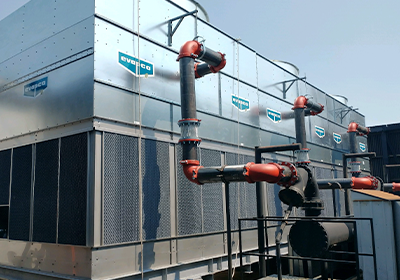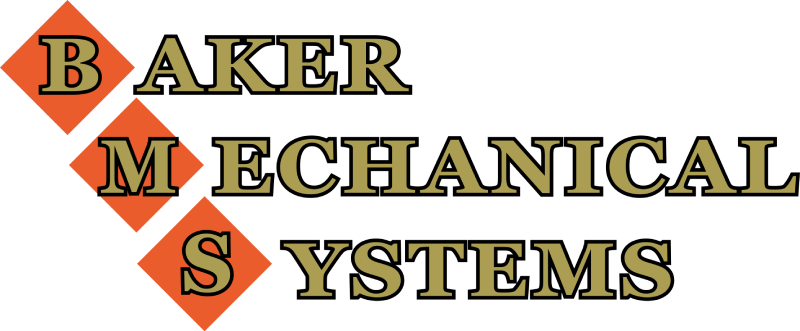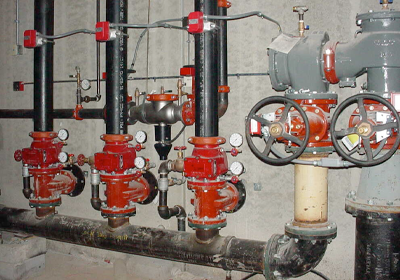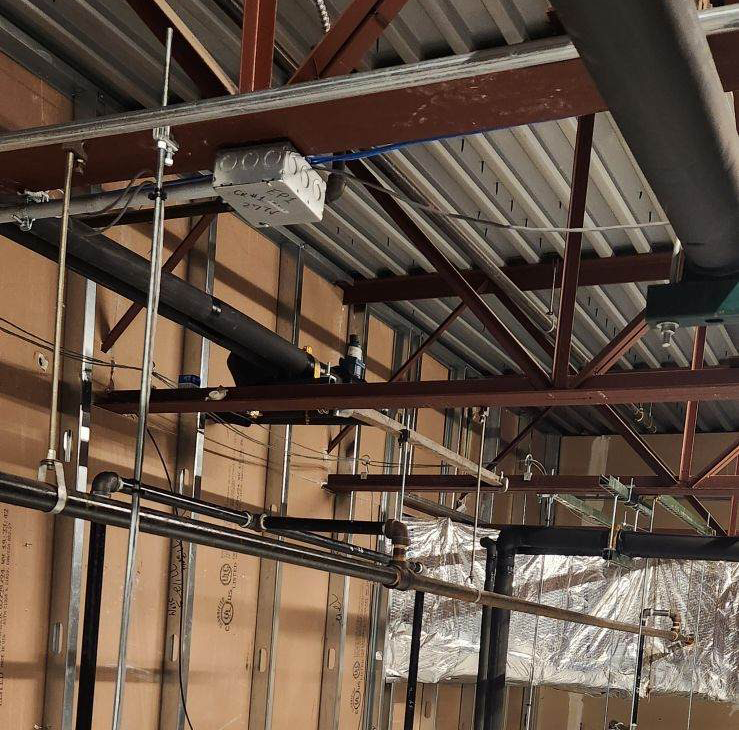Blog
Top 10 Common Process Piping Mistakes (and How to Avoid Them)

Process piping is the backbone of industrial and commercial operations, ensuring the smooth transport of liquids, gases, and chemicals. However, mistakes in installation, maintenance, or system design can lead to inefficiencies, safety hazards, and costly downtime.
At Baker Mechanical Systems, we specialize in process piping design, installation, and maintenance for industrial and commercial facilities in Rochester, NY. Whether you're installing a new system or upgrading an existing one, avoiding these common mistakes is critical to ensuring long-term reliability and efficiency.
If your process piping system is experiencing performance issues, contact us today for an inspection.
1. Incorrect Pipe Sizing
One of the most frequent mistakes in process piping is using pipes that are too small or too large for the intended application.
Why It’s a Problem:
- Undersized pipes can lead to high pressure drops and system inefficiencies.
- Oversized pipes can result in wasted energy and increased costs.
- Improper sizing causes uneven flow rates and can stress system components.
How to Avoid It:
- Work with experienced process piping engineers to select the correct pipe size.
- Consider future expansion when designing the system.
- Regularly review flow requirements and adjust accordingly.
2. Poor Material Selection
Not all piping materials are suitable for every application. Choosing the wrong material can lead to corrosion, contamination, or system failure.
Common Mistakes:
- Using carbon steel for corrosive chemicals.
- Installing PVC in high-temperature environments.
- Selecting low-grade alloys that degrade under pressure.
How to Avoid It:
- Match piping material with the specific fluid or gas being transported.
- Use stainless steel or specialized coatings for corrosive substances.
- Consult with process piping professionals to determine the best material for longevity.
3. Improper Welding and Joint Connections
Faulty welds and poorly connected joints can lead to leaks, weak points, and structural failure in process piping systems.
Why It’s a Problem:
- Bad welding can create stress points that crack under pressure.
- Leaking joints cause fluid loss and safety hazards.
- Improper connections result in pressure drops and inefficiencies.
How to Avoid It:
- Use certified welders for all pipe installations.
- Conduct thorough pressure testing after installation.
- Ensure joints are properly aligned and secured with appropriate gaskets and seals.
4. Ignoring Pipe Expansion and Contraction
Temperature changes cause pipes to expand and contract, and failing to account for this can lead to cracking, buckling, and joint failures.
Why It’s a Problem:
- Pipes can rupture under thermal stress.
- Rigid installations may lead to system malfunctions.
- Expansion forces can damage support structures and nearby equipment.
How to Avoid It:
- Install expansion joints and flexible connectors.
- Use pipe loops and offsets to allow for movement.
- Select materials that can handle thermal variations in your environment.
5. Poor Pipe Routing and Layout
A poorly designed pipe routing system can create operational challenges and increase maintenance costs.
Common Mistakes:
- Excessive bends and turns increase friction loss.
- Placing pipes too close to heat sources accelerates degradation.
- Routing pipes in hard-to-reach areas makes maintenance difficult.
How to Avoid It:
- Plan layouts with minimal bends and obstructions.
- Keep pipes away from extreme heat or cold sources.
- Ensure easy accessibility for maintenance and inspections.
6. Failing to Consider Flow Dynamics
Improper pipe layout and design can disrupt fluid dynamics, leading to inefficiencies in pressure, velocity, and turbulence.
Why It’s a Problem:
- Sudden pressure drops reduce system performance.
- Poor flow control increases wear and tear on components.
- Turbulence in the system leads to energy loss.
How to Avoid It:
- Use gradual transitions instead of sudden changes in pipe diameter.
- Install flow meters and control valves to regulate pressure and speed.
- Consult with process engineers for optimal flow design.
7. Inadequate Support and Anchoring
Without proper support, pipes can sag, shift, or vibrate, causing stress on the system and premature failure.
Why It’s a Problem:
- Sagging pipes lead to pooling and uneven distribution of fluids.
- Vibrations from machinery can cause cracks and leaks.
- Unanchored pipes move under pressure, increasing the risk of accidents.
How to Avoid It:
- Use adequate support brackets, clamps, and hangers.
- Secure pipes with proper anchoring at expansion points.
- Conduct regular inspections to check for misalignment.
8. Skipping Routine Maintenance and Inspections
Even the best-installed process piping system can fail if it is not properly maintained.
Why It’s a Problem:
- Unnoticed wear and tear can lead to unexpected breakdowns.
- Lack of inspections increases the risk of pipe corrosion and contamination.
- Maintenance delays can result in higher repair costs.
How to Avoid It:
- Implement a scheduled maintenance program.
- Conduct leak detection tests and pressure checks.
- Flush and clean pipes regularly to prevent blockages.
9. Ignoring Regulatory Compliance and Safety Standards
Non-compliance with OSHA, EPA, and NFPA guidelines can result in penalties, shutdowns, or accidents.
Why It’s a Problem:
- Failing inspections can shut down operations.
- Non-compliance may lead to legal and financial penalties.
- Improperly labeled pipes create workplace hazards.
How to Avoid It:
- Stay updated on industry regulations and building codes.
- Label pipes according to OSHA and ANSI standards.
- Conduct regular compliance audits.
10. Not Working with a Qualified Process Piping Specialist
A common mistake businesses make is relying on inexperienced contractors for process piping installation and maintenance.
Why It’s a Problem:
- Poorly executed installations result in early system failures.
- Lack of expertise leads to costly inefficiencies.
- Improper material selection can compromise safety and performance.
How to Avoid It:
- Hire a professional process piping team with industry expertise.
- Work with contractors who understand your specific facility needs.
- Choose a company that provides long-term support and maintenance.
Contact Baker Mechanical Systems for expert process piping solutions designed for efficiency, compliance, and reliability.
Upgrade Your Process Piping System Today
Process piping mistakes can lead to serious operational risks, increased costs, and safety hazards. Whether you're installing a new system, upgrading an existing one, or performing maintenance, working with experienced professionals ensures that your facility runs smoothly and efficiently.
At Baker Mechanical Systems, we specialize in process piping design, installation, and maintenance for businesses in Rochester, NY.
Schedule a consultation today and let our experts help you avoid costly process piping mistakes.
‹ Back







